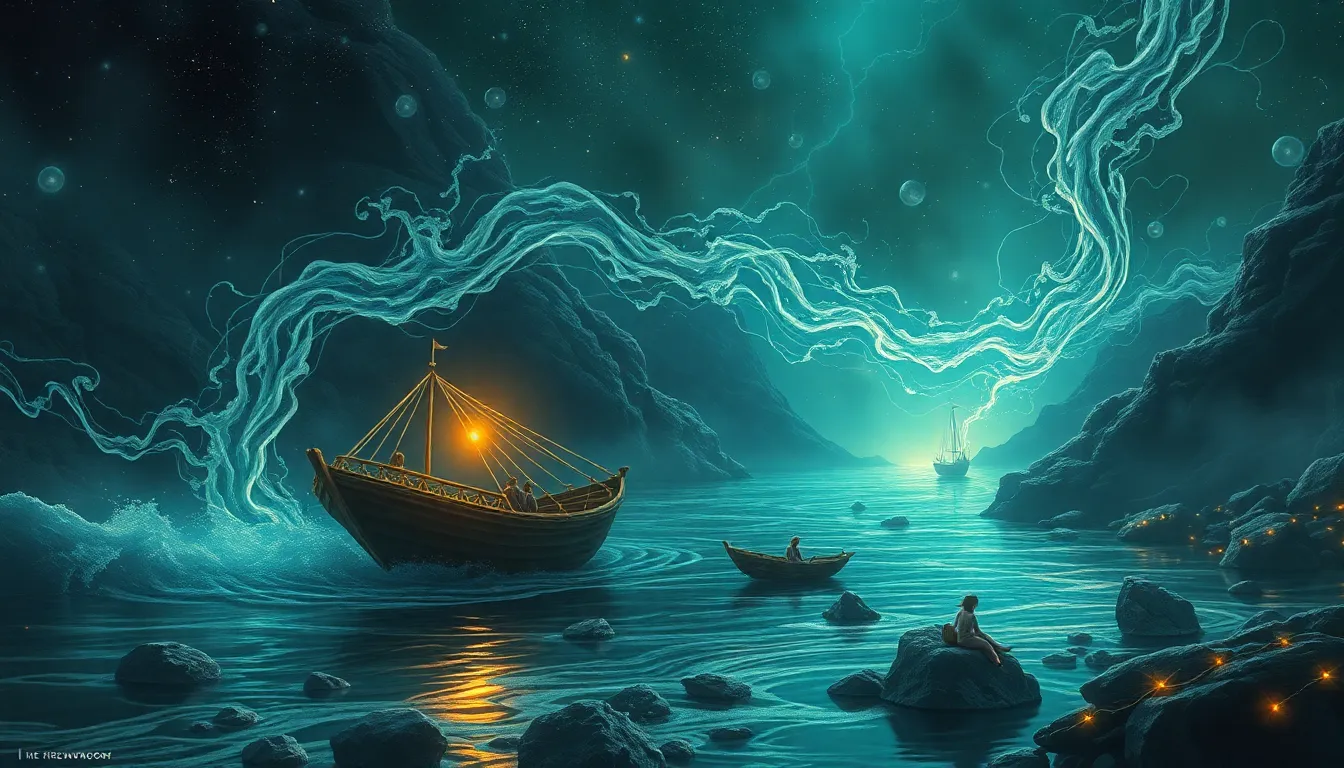The River of the Gods: Myths of Divine Beings
I. Introduction
The concept of divine beings has been an integral part of human culture and spirituality throughout history. From gods and goddesses to spirits and ancestors, these entities often embody the forces of nature, including rivers, which play a crucial role in the myths and beliefs of various societies. Rivers are not only vital for sustenance, providing water and fertile land, but they also serve as spiritual connectors, guiding souls and transcending the boundaries between the material and the divine.
This article aims to explore the myths associated with divine beings and rivers, delving into how these narratives reflect the relationship between humanity and the natural world. Through examining various cultures, we will uncover the significance of rivers as symbols of life, death, and spiritual journeys.
II. The Role of Rivers in Mythology
Rivers have held symbolic meaning across different cultures, often representing the flow of life, the passage of time, and the journey of the soul. Their powerful currents and ever-changing nature can symbolize both creation and destruction.
- Symbolism of rivers: In many myths, rivers are depicted as life-givers, nurturing civilizations and serving as pathways for spiritual enlightenment.
- Rivers as spiritual connectors: They are often seen as thresholds between the earthly realm and the divine, guiding souls in their journey after death.
Case studies of prominent rivers in mythology include:
- The Nile: Revered in Ancient Egypt for its life-sustaining properties.
- The Ganges: Considered sacred in Hinduism, representing purity and divine femininity.
- The Styx: The river of the underworld in Greek mythology, marking the boundary between the living and the dead.
III. Divine Beings and Their Connection to Rivers
Divine beings, including gods, goddesses, and spirits, play a significant role in mythology, often closely associated with rivers. These entities personify natural forces and embody the attributes of the rivers they govern.
- Types of divine beings:
- Gods and goddesses, representing various aspects of nature and life.
- Spirits, often viewed as guardians or protectors of the rivers.
- Relationships with rivers: In many traditions, divine beings are believed to reside in or oversee the rivers, influencing their flow and the life they sustain.
IV. The Ganges: Sacred Waters and Divine Femininity
The Ganges River holds a prominent place in Hindu culture, revered as a sacred entity that embodies the goddess Ganga. Its waters are considered purifying, and it is believed that bathing in the Ganges can cleanse one of sins and facilitate spiritual liberation.
- Historical and cultural significance: The Ganges has been a lifeline for millions, supporting agriculture and sustaining communities for centuries.
- Myths surrounding the goddess Ganga: According to legend, Ganga descended from the heavens to Earth, guided by the pleas of King Bhagiratha, who sought to purify the souls of his ancestors.
- Rituals and beliefs: Pilgrimages to the Ganges, especially during festivals like Kumbh Mela, highlight the river’s spiritual importance, with rituals that involve bathing, prayer, and offerings.
V. The Nile: The Lifeblood of Ancient Egypt
In Ancient Egypt, the Nile River was revered as the source of life, influencing agriculture, trade, and the very fabric of society. It played a central role in the civilization’s mythology and religious practices.
- The Nile’s role: The annual flooding of the Nile deposited nutrient-rich silt on its banks, allowing for successful farming and sustaining the population.
- Deities associated with the Nile:
- Hapi: The god of the annual flooding, symbolizing fertility and abundance.
- Osiris: Often linked to the Nile, representing resurrection and the cycle of life.
- Myths explaining the Nile’s flooding: Myths tell of the tears of the goddess Isis mourning Osiris, which fell to the earth and nourished the land.
VI. The Styx: The River of the Underworld
The Styx River in Greek mythology serves as a boundary between the world of the living and the realm of the dead. It is a significant element in the journey of the soul after death.
- Introduction to the Styx: The river was believed to be a body of water that souls must cross to reach the afterlife.
- Significance in the afterlife journey: The crossing of the Styx marked the transition to the underworld, overseen by Charon, the ferryman.
- The role of Charon: Souls were required to pay Charon with an obol, a small coin, to ensure safe passage across the river.
VII. The Amazon: Nature’s Divine Guardians
The Amazon River, flowing through South America, is steeped in rich mythology and spirituality, often viewed as a living entity with its own spirit and guardians.
- Overview of Amazonian mythology: Many indigenous cultures see the Amazon as a source of life, home to spirits and deities that protect the forest and its waters.
- Spirits and deities associated with the Amazon River:
- Yasuni: A spirit believed to guard the forest and its rivers.
- Mother Water: A deity representing the life-giving properties of water.
- Myths reflecting the relationship: Stories often highlight the symbiotic relationship between the river, its guardians, and the people who rely on it for survival.
VIII. Cultural Interpretations of Divine Rivers
A comparative analysis of river myths across cultures reveals both common themes and unique interpretations. While rivers universally symbolize life and death, the narratives surrounding them differ significantly.
- Common themes:
- Rivers as symbols of purification and rebirth.
- Divine beings as protectors or embodiments of the rivers.
- Unique interpretations: Each culture’s relationship with its rivers reflects its history, environment, and spiritual beliefs.
As society evolves, these myths continue to adapt, influencing contemporary spiritual practices and beliefs.
IX. The Influence of Mythology on Modern Spiritual Practices
Ancient river myths continue to resonate in modern spiritual beliefs, shaping rituals and practices that reflect their enduring significance.
- Current spiritual beliefs: Many individuals incorporate the symbolism of sacred rivers into their spiritual practices, seeking connection and renewal.
- Rituals inspired by these myths: Practices such as water blessings and river pilgrimages are common, reflecting respect for nature and its divine aspects.
- Ongoing relevance: The myths surrounding these rivers encourage a deeper understanding of our relationship with the environment and the divine.




